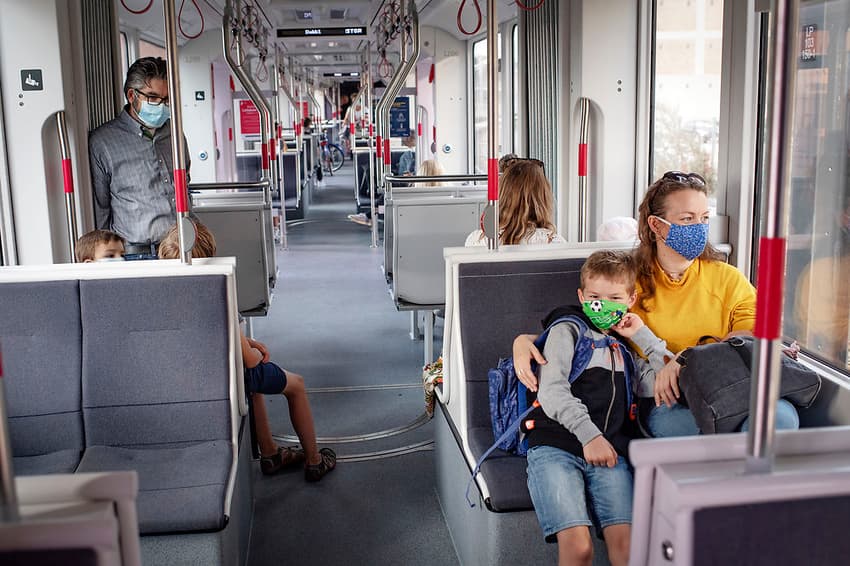Free face masks given to public transport passengers in Aarhus

Public transport passengers in Aarhus were on Monday offered free face masks by regional operator Midttrafik.
The masks were distributed by company staff after they were made obligatory for public transport use in Denmark’s second city, which is currently experiencing a sharp spike in Covid-19 infections.
READ ALSO: Aarhus coronavirus outbreak: here's what you need to know
Free face masks were made available at several places in the city on Monday, Ritzau reports.
According to Aarhus Sporveje, the company which runs the city’s buses, the initiative has boosted compliance with the order to wear face masks.
“We are naturally following the guidance we have been given to tell people they must wear face masks,” the company’s head of HR and quality Bjarne Larsen said.
“There will be some people who will have to leave the bus if they don’t have (a face mask),” Larsen said.
Regional operating company Midttrafik is responsible for the initiative to provide face masks to the city’s public transport users. It will remain in place for an initial one-week period.
The free face masks will primarily be made available during congested periods such as rush hour.
After reports over the weekend that pharmacies in the city had sold out of face masks, stores in the city have now received five million of the protective item from a national stock, so they are expected to be available in pharmacies as well as drug store chain Matas on Monday.
READ ALSO: Danish party calls for free face masks for low-income groups
Comments
See Also
The masks were distributed by company staff after they were made obligatory for public transport use in Denmark’s second city, which is currently experiencing a sharp spike in Covid-19 infections.
READ ALSO: Aarhus coronavirus outbreak: here's what you need to know
Free face masks were made available at several places in the city on Monday, Ritzau reports.
According to Aarhus Sporveje, the company which runs the city’s buses, the initiative has boosted compliance with the order to wear face masks.
“We are naturally following the guidance we have been given to tell people they must wear face masks,” the company’s head of HR and quality Bjarne Larsen said.
“There will be some people who will have to leave the bus if they don’t have (a face mask),” Larsen said.
Regional operating company Midttrafik is responsible for the initiative to provide face masks to the city’s public transport users. It will remain in place for an initial one-week period.
The free face masks will primarily be made available during congested periods such as rush hour.
After reports over the weekend that pharmacies in the city had sold out of face masks, stores in the city have now received five million of the protective item from a national stock, so they are expected to be available in pharmacies as well as drug store chain Matas on Monday.
READ ALSO: Danish party calls for free face masks for low-income groups
Join the conversation in our comments section below. Share your own views and experience and if you have a question or suggestion for our journalists then email us at [email protected].
Please keep comments civil, constructive and on topic – and make sure to read our terms of use before getting involved.
Please log in here to leave a comment.